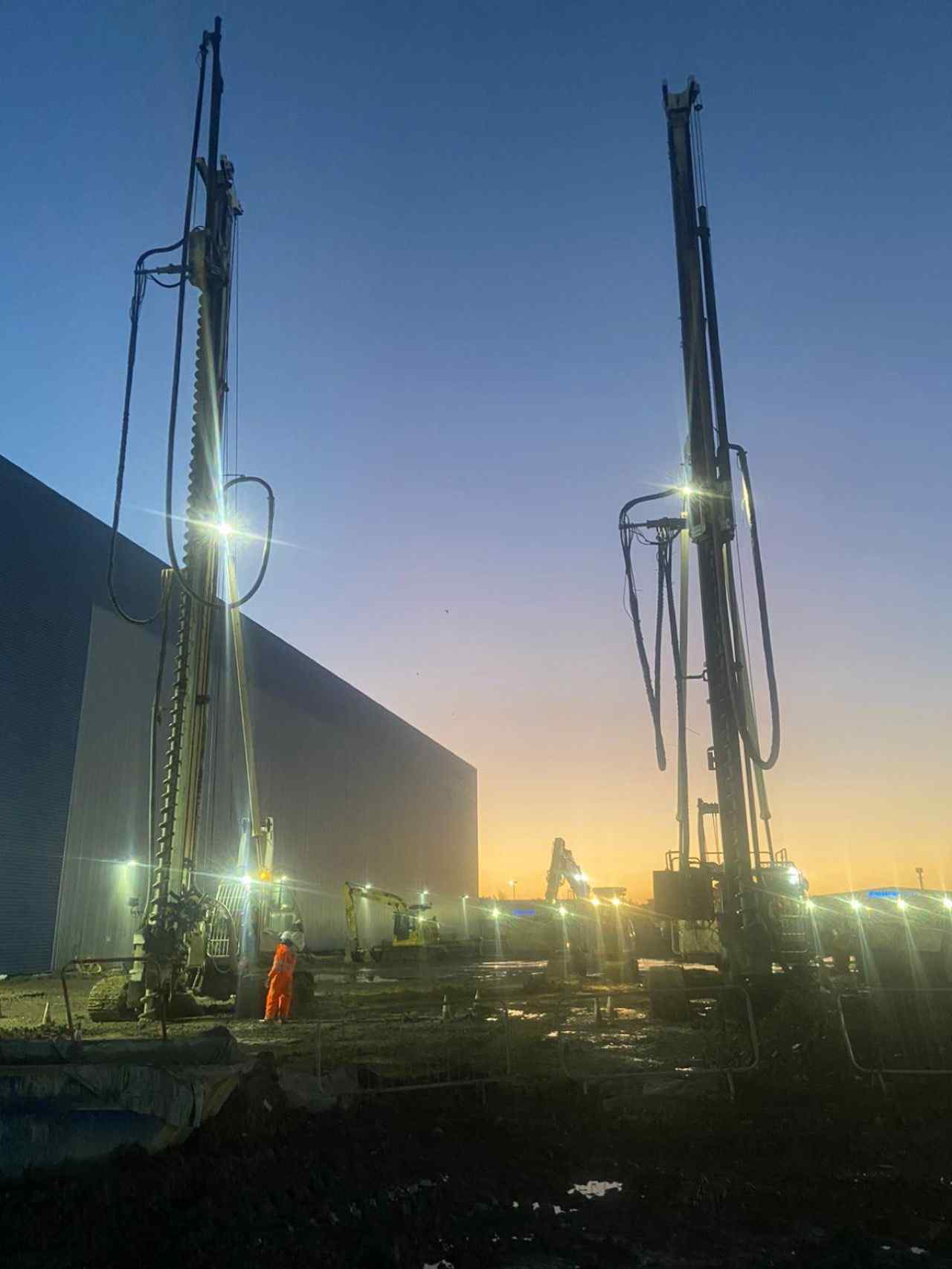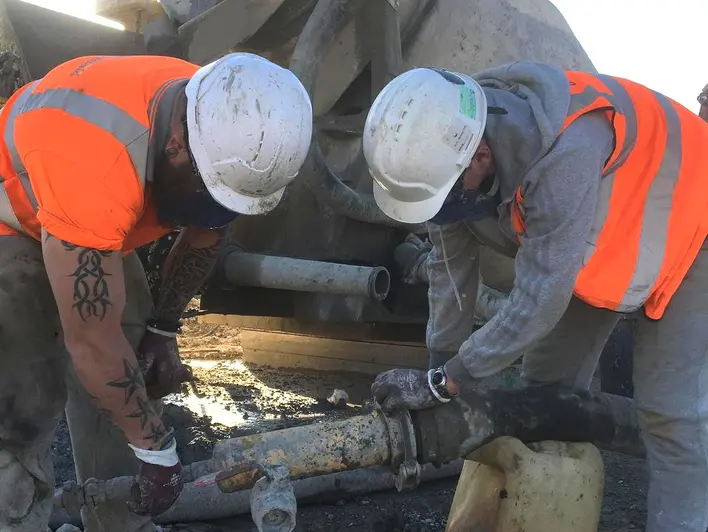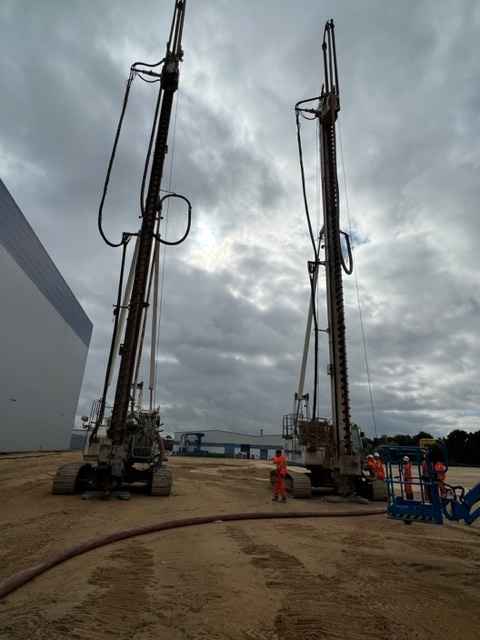What Are Pile Foundations? [Purpose, Types, & Components]

Piled foundations are deep foundations used in construction to transfer the load of a structure to deeper, more sturdy layers of soil or rock below the ground surface. They are commonly used when the upper soil layers are weak or insufficient to support the structure’s weight.
Let me give you an example! You must have heard of Burj Khalifa. Right? During its construction, 192 of these piles were used. Each pile is made of concrete and buried about 50 metres into the ground. It took a whopping 45,000 cubic metres of concrete to construct these piles.
When Are Piled Foundations Needed?
- When the soil at the surface is not firm enough to hold the structure’s weight. This is often the case in areas with soft soils, such as clay or peat.
- When there is a surface of weak soil that needs to be bypassed. This is usually the case in areas with expansive soils, which can swell and shrink with changes in moisture content.
Mon–Fri: 8:00am-6:00pm
Skilled Labour
Customer Satisfaction
Advanced Machines
4. When there is a surface of weak soil that needs to be bypassed. This is usually the case in areas with expansive soils, which can swell and shrink with changes in moisture content.
5. When the structure is located in a region that is subject to earthquakes or flooding. Pile foundations can provide a more stable foundation for structures in these areas, as they can transfer loads to deeper soil or rock less affected by flooding or earthquakes.
6. When the structure is very large or heavy. Pile foundations can provide a more stable foundation for large or heavy structures, as they can distribute the load over a larger area.
7. When the building is situated in an area with a high water table. Pile foundations can be installed below the water table, which can help to prevent the structure from becoming waterlogged.
How Piled Foundations Work?
Pile foundations transfer the load from a structure to the ground through a series of long, slender columns called piles. The piles are typically made of concrete or steel and are driven or drilled into the ground to a depth where the soil or rock is strong enough to support the load.
Types of Piled Foundations
Pile foundations are divided into many types based on the construction method, load-bearing principle, and material used. The following is the overview of all the pile foundation types based on all these classifications.
Based on the construction method
Replacement piles (bored piles)
Replacement piles are made by drilling a hole in the ground and filling it with concrete or another material. When the hole is dug, the soil that is taken out is replaced with the new material.
This way, the pile doesn’t push the surrounding soil aside. Replacement piles are used when the ground is soft and not strong enough to hold up the weight of the pile.
Displacement piles (driven piles)
Displacement piles are created by driving or vibrating the pile into the ground. As the pile is moved into the ground, it moves the soil around it, creating a space or cavity.
Displacement piles are used in hard soils because the ground is strong enough to support the pile and can handle the displacement caused by driving or vibrating it into place.
Replacement Vs Displacement piles
Feature | Replacement piles | Displacement piles |
Installation method | Drilled in place | Driven or vibrated into the ground |
Soil type | Soft soils | Hard soils |
Effect on the surrounding soil | Does not displace soil | Displaces soil |
Typical use | Soft soils | Hard soils |


Based on the load-bearing principle
End-bearing piles
End-bearing piles transmit the weight of a structure to the ground by resting on a robust layer of rock or soil at the bottom of the pile.
The tip of the pile is made larger to make it firmer and able to hold more weight. End-bearing piles are used when the ground is sturdy enough to hold the weight of the pile.
Friction piles
Friction piles, on the other hand, transfer the load through the sides of the pile. The side of the pile is made rough to create more friction between the pile and the soil around it.
Friction piles are used when the ground is not strong enough to support the weight of the pile, but there is enough friction between the pile and the soil to prevent the pile from moving.
End-bearing Vs Friction piles
Feature | End-bearing piles | Friction piles |
Load transfer mechanism | Tip bearing | Friction |
Soil type | Strong soils | Weak soils |
Tip enlargement | Yes | No |
Side roughening | No | Yes |
Typical use | Strong soils | Weak soils |
Based on the material used
Timber Piles
Timber piles are made of wood and are used in soft soils. They are easier to install and cheaper but not as strong as concrete or steel piles. Timber piles can rot or be damaged by insects, so they must be treated with special chemicals to last longer.
Concrete Piles
Concrete piles are constructed of solid concrete and can be used in distinct soil types. They are very strong and durable but more expensive than timber piles.
There are two types of concrete piles: precast piles, which are made in a factory and transported to the construction site, and cast-in-place piles, which are created on-site by pouring concrete into drilled holes.
Steel Piles
Steel piles are made of strong steel and are used in hard soils. They are highly durable but pricier than timber or concrete piles. Steel piles can be installed by driving them into the ground with a pile driver machine or drilling them into the ground using a drilling rig.
Composite Piles
Composite piles combine distinct materials, like concrete and steel. They are used in challenging, difficult soils to drive or drill into. Composite piles are very strong and long-lasting but more expensive than other piles.
Timber Vs Concrete Vs Steel Vs Composite Piles
Feature | Timber piles | Concrete piles | Steel piles | Composite piles |
Material | Wood | Concrete | Steel | Concrete and steel |
Soil type | Soft soils | Variety of soil conditions | Hard soils | Difficult to drive or drill soils |
Cost | Inexpensive | Expensive | Expensive | Expensive |
Durability | Susceptible to decay and insect damage | Very durable | Very durable | Very durable |
Installation method | Driven or drilled | Cast-in-place or driven | Driven or drilled | Driven or drilled |
What are Pile Caps, Ring Beams, and Floors?
Pile caps, ring beams, and floors are all important components of a piled foundation. Pile caps, ring beams, and floors work together to provide a secure and stable foundation for a structure.
The pile caps distribute the load from the structure to the piles, the ring beams tie the piles together and provide lateral stability, and the floors support the weight of the building above the foundation.
The following is a detailed overview of what are pile caps, ring beams, and floors.
Pile caps
Pile caps are concrete slabs that are placed on top of piles to distribute the load from the structure to the piles. These are typically reinforced with steel to make them firm enough to support the load.
Ring beams
Ring beams are concrete beams that are placed around the perimeter of a pile cap to tie the piles together and provide lateral stability. Ring beams are also typically reinforced with steel.
Floors
Floors are the horizontal structural elements that support the weight of the building above the foundation. Floors can be made of various materials, such as concrete, wood, or steel.
